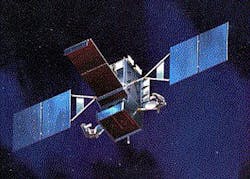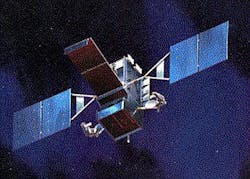Northrop Grumman delivers Space Based Infrared System payload to Lockheed Martin
EL SEGUNDO, Calif., 8 Oct. 2014. Northrop Grumman Electronic Systems has delivered a Space Based Infrared System (SBIRS) payload to Lockheed Martin Space Systems Company in Sunnyvale, Calif. The payload -- the third delivered on the SBIRS Follow-on Production contract in 15 months -- will be integrated with a SBIRS geosynchronous (GEO) spacecraft in preparation for its projected launch in the summer of 2016.
The GEO payload includes a pair of infrared sensors which operate in multiple bands and provide expanded capabilities over the Defense Support Program satellites that it replaces. The scanning sensor is paired with a staring sensor to support strategic and theater missile warning, battlespace awareness, and technical intelligence.
"Delivery of the payload is a major accomplishment in the life of the program, and I would like to congratulate our entire team, contractor and Air Force, on reaching this milestone," explains Maj. Jon Seal, GEO-4 vehicle manager. "It takes a tremendous amount of work and dedication to bring these systems together, but it pays off when we deliver new capabilities to the warfighter."
The fourth GEO satellite is the last production unit required to complete the geosynchronous portion of the SBIRS constellation. The fifth and sixth GEO satellites, which were placed on contract earlier this year, will replace the first two GEO satellites at the end of their mission lives.
The SBIRS program is led by the Infrared Space Systems Directorate at the U.S. Air Force Space and Missile Systems Center. Lockheed Martin Space Systems Company is the SBIRS prime contractor. Northrop Grumman Electronic Systems, Azusa, Calif., is the payload integrator.
The 460th Space Wing at Buckley AFB in Aurora, Colo., operates the SBIRS system.
The Air Force Space Command's Space and Missile Systems Center, located at Los Angeles Air Force Base, Calif., is the U.S. Air Force's center of acquisition excellence for acquiring and developing military space systems. Its portfolio includes GPS, military satellite communications, defense meteorological satellites, space launch and range systems, satellite control networks, space based infrared systems, and space situational awareness capabilities.

